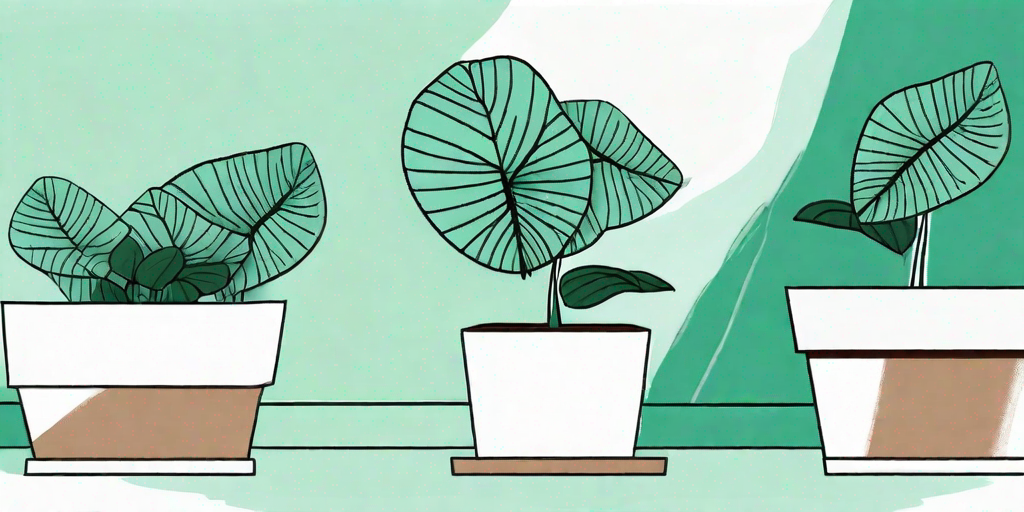
Elephant ears, also known as Colocasia, are a plant lover's dream with their dramatic, large leaves and tropical vibe. However, these beauties can sometimes be a bit of a diva, especially when it comes to their leaf edges turning brown. But fear not, plant enthusiasts! This guide will help you navigate the murky waters of elephant ear care, ensuring your green thumb reputation remains intact.
Understanding Your Elephant Ears
Before we delve into the nitty-gritty of elephant ear care, it's important to understand what makes these plants tick. Elephant ears are tropical plants, which means they are used to warm, humid environments. They are also heavy feeders, requiring plenty of nutrients to support their large, lush leaves.
Elephant ears are also sensitive to changes in their environment. A sudden drop in temperature, lack of water, or poor nutrition can all cause your plant to react negatively. And by negatively, we mean turning those beautiful green leaves into a sad, brown mess.
Why Do Elephant Ears Turn Brown?
There are several reasons why your elephant ears might be turning brown. The most common reason is water stress, either too much or too little. Elephant ears love water, but they also need well-draining soil to prevent root rot.
Another common reason is exposure to cold temperatures. Remember, these are tropical plants! They don't do well in chilly weather. If you live in a colder climate, it's best to bring your elephant ears indoors during the winter months.
Preventing Brown Edges: The How-To Guide
Now that we've covered the basics of elephant ear care, let's get down to business. Here's how to prevent those pesky brown edges and keep your elephant ears thriving.
Watering Your Elephant Ears
As mentioned earlier, elephant ears love water. But they don't like to sit in it. The key is to keep the soil consistently moist, but not waterlogged. A good rule of thumb is to water your elephant ears when the top inch of soil feels dry to the touch.
But be careful not to overdo it. Too much water can lead to root rot, which is a surefire way to kill your plant. If you notice the leaves turning yellow or wilting, it might be a sign that you're overwatering.
Feeding Your Elephant Ears
Elephant ears are heavy feeders, which means they need plenty of nutrients to grow those big, beautiful leaves. A slow-release fertilizer applied in the spring and summer months should do the trick.
But remember, more is not always better when it comes to fertilizer. Too much can burn the roots and lead to...you guessed it, brown edges. So follow the package instructions carefully.
Additional Care Tips
Watering and feeding are important, but there are other factors to consider when caring for your elephant ears. Here are some additional tips to keep your plants happy and healthy.
Lighting and Temperature
Elephant ears prefer bright, indirect light. Too much direct sunlight can scorch the leaves, while too little light can cause the plant to become leggy.
As for temperature, try to keep your elephant ears in a warm environment. They can tolerate temperatures as low as 60°F, but they really thrive in temperatures between 70°F and 85°F.
Humidity
Remember, elephant ears are tropical plants. They love humidity. If you live in a dry climate, consider using a humidifier or placing a tray of water near your plant to increase the humidity levels.
Frequently Asked Questions
Still have questions? Don't worry, we've got you covered. Here are some of the most frequently asked questions about elephant ear care.
Why are my elephant ears drooping?
Drooping leaves can be a sign of water stress. Check the soil to see if it's too dry or too wet. Adjust your watering schedule as needed.
Can I grow elephant ears indoors?
Absolutely! In fact, elephant ears make excellent houseplants. Just make sure to provide them with plenty of light and humidity.
How often should I repot my elephant ears?
Elephant ears are fast growers and may need to be repotted every year or two. Look for signs of root-bound plants, such as slowed growth or water running straight through the pot.
Conclusion
With the right care, your elephant ears can thrive and bring a touch of the tropics to your home or garden. Remember to keep the soil moist, provide plenty of nutrients, and protect your plant from cold temperatures. And most importantly, don't be discouraged if your elephant ears throw a tantrum from time to time. They're worth the effort!















